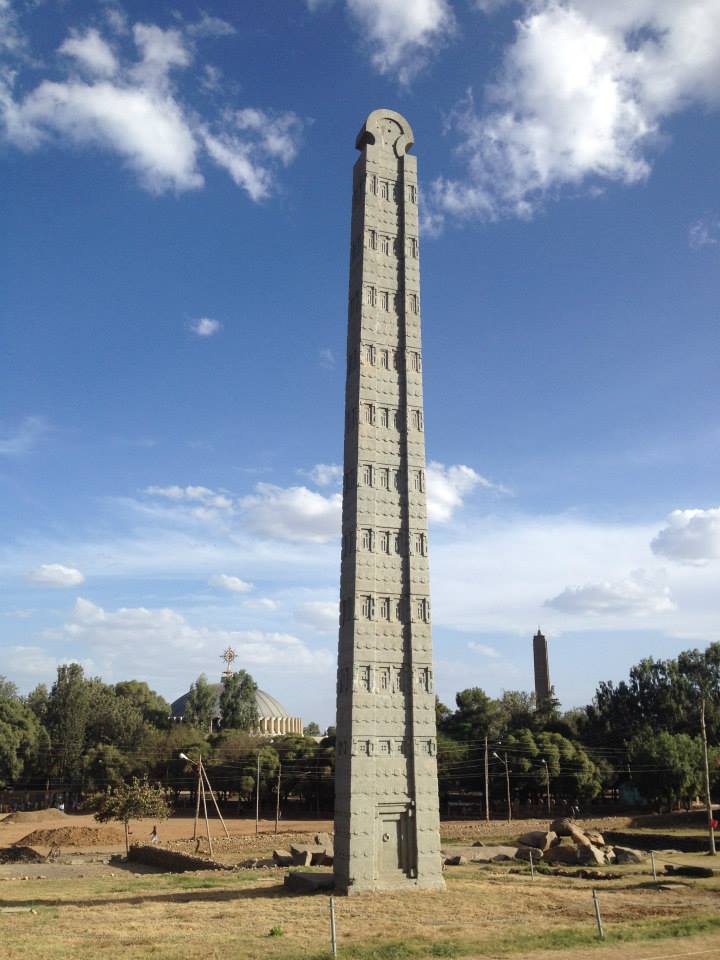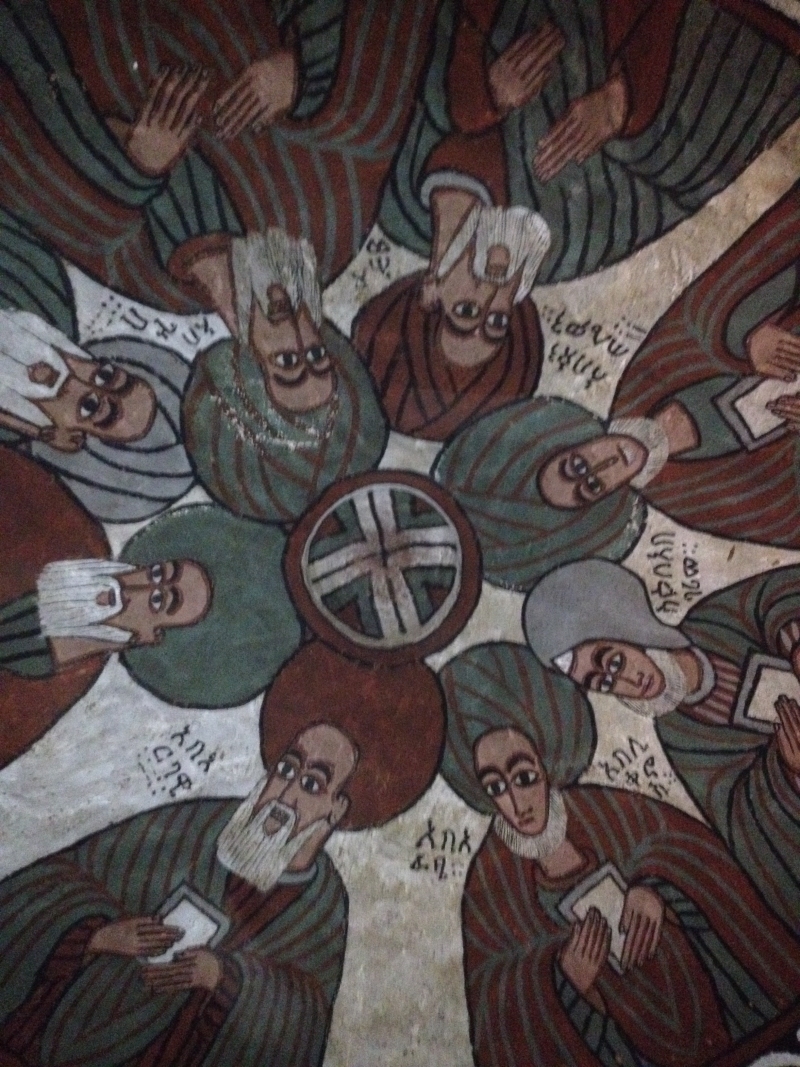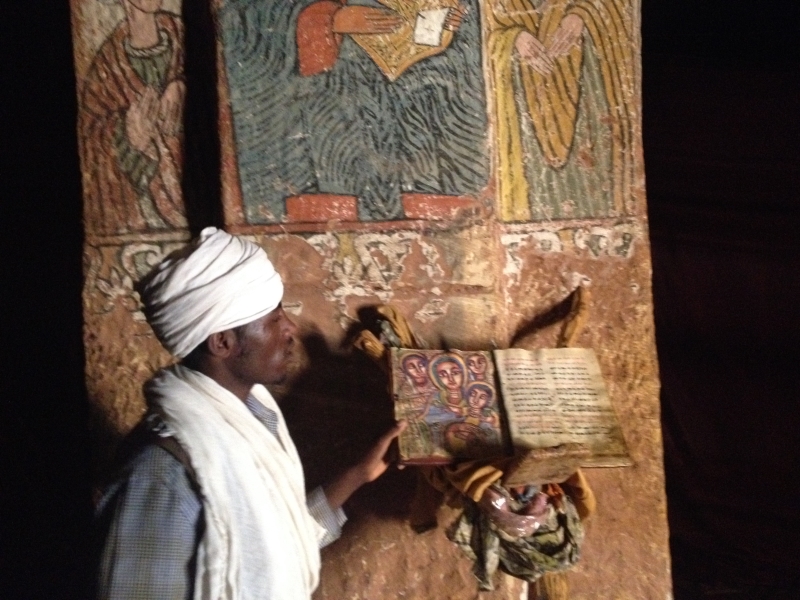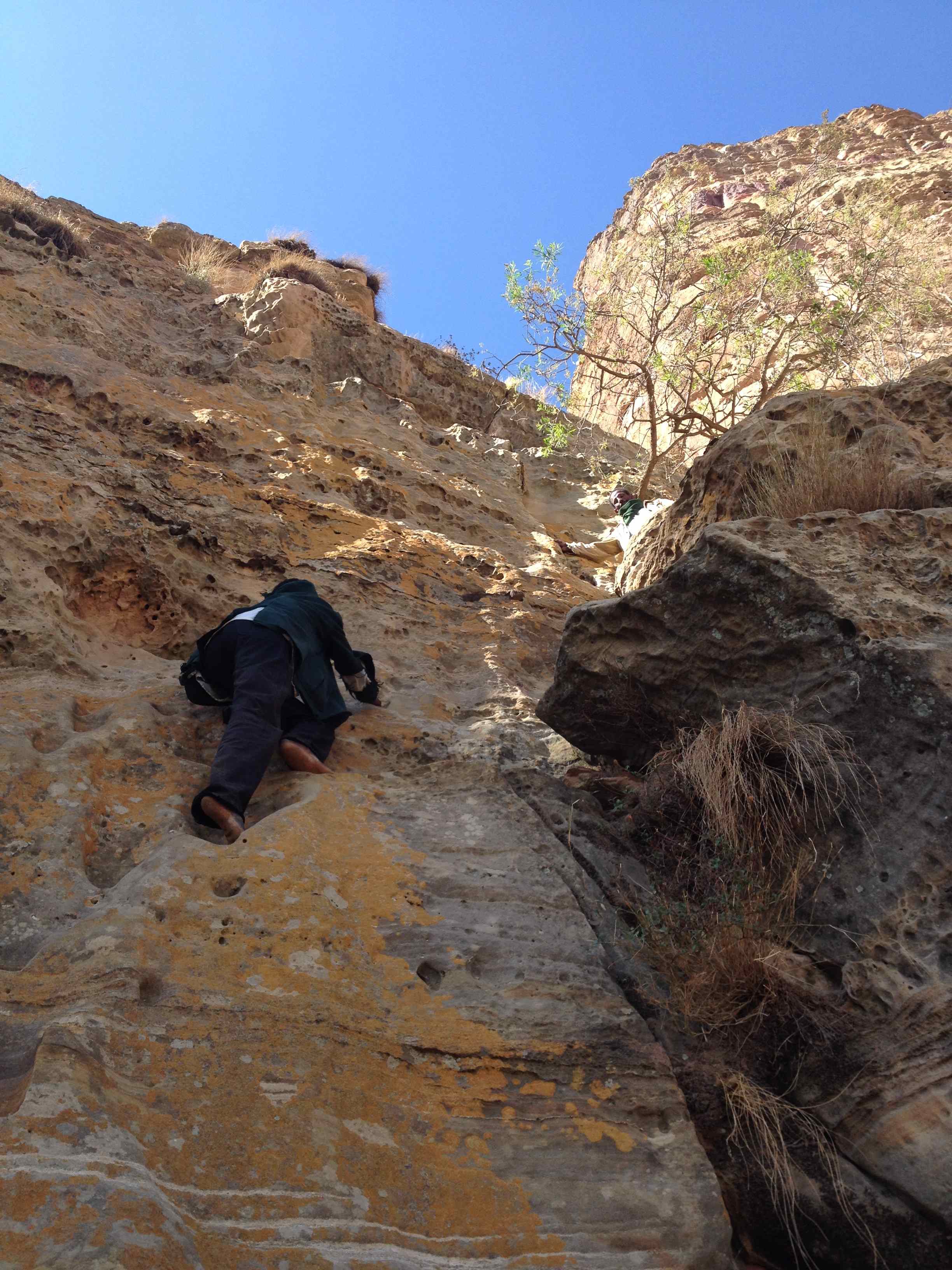While exploring the rock church of Abuna Yemata in Tigray, northern Ethiopia, I wondered at the remarkable way in which Ethiopia has preserved its cultural heritage over the years.
Tigray Churches on the Ethiopia Historic Route
I was struck particularly by the almost-medieval character of its religious life, as I studied the 600-year old murals adorning the walls of this most remote of Ethiopia’s churches (Abuna Yemata, built high into a cliff face, is famously inaccessible), and I was struck too, as the local priest guided me up the steep rock climb required to reach his church, by the old-fashioned courtesies and greetings of the Ethiopian people, courtesies that are extended not only to friends and family but also to visitors. Ethiopia is an ancient land, and standing in Abuna Yemata, I felt as if I had stepped back several centuries.
Today Ethiopia is enjoying a fast-growing economy and ever stronger and broader connections with the developed world, but the country has not – happily – moved entirely into the twenty-first century. Nowhere is this more apparent than in the northern region of Tigray. This often overlooked land (after the mandatory visit to Axum as part of the Historic Tour, most visitors to Ethiopia simply by-pass the rest of Tigray) is one of the most fascinating parts of Ethiopia. Earlier this month I had the opportunity to explore Tigray at length, and to learn more about its rich and fascinating history.
The birthplace of the Axumite Empire, Tigray has as its capital the ancient city of Axum, Ethiopia’s holiest city and historic capital. Axum’s history extends back far into Ethiopia’s pre-Christian era (the country is believed to have been converted to Christianity in the 4th-century) when Ethiopia was the centre of one of the great empires of the ancient world along with Egypt, Rome, Greece and Persia. Visiting Axum today you get a sense of just how evolved and powerful was the pre-Christian Axumite Empire, apparent not just in the city’s famous stelae but also archaeological discoveries such as the palace of Queen of Sheba and, outside the city limits, the Temple of Yeha.

With the advent of Christianity during the reign of Ezana the Great (320-360AD) began a period of church building that extended right through to the twentieth century, when the modern church of St Mary of Zion in Axum (reputedly housing the Ark of the Covenant) was built by the Emperor Haile Selassie and his wife on old foundations. Much of this church building took place, however, not in Axum but in the surrounding countryside, where religious sites are still being uncovered by archaeologists today.
For most visitors to Tigray, the architectural focus will be the 150+ churches carved, built and decorated from the early Christian era up to the 10th and 11th centuries. The churches vary hugely in style, from semi-monolithic rock churches and cave churches to more conventional free-standing stone constructs. I was fortunate enough to have the chance to visit several of them, and I was amazed by the miraculous ability of their builders and decorators, their capacity to create works of art in the most unlikely of locations and with the most limited materials. Mountain top cave churches such as Abuna Yemata in the Gheralta range show the skill of the builders who worked in such difficult, precipitous locations! Intricate murals, often preserved by the nature of the buildings (relatively constant temperature, quite dry, dimly lit) are further evidence of the developed technique of Ethiopia’s medieval artists. Few of the Tigray churches have been extensively restored, and while many show their age, stand today much as they did 1,000 year ago. The traditional services that I witnessed in several of the churches, with the priests dressed in their traditional robes and the congregation in their white shawls, might have been taking place in medieval times.
These ancient temples and churches are set in a landscape that can only be described as Biblical, redolent of the Old Testament era. Being adjacent in latitude to the Horn of Africa, Tigray has a landscape formed by a very hot and dry climate during the day, and cool nights at elevation. It is a harsh, mountainous land that contrasts sharply with the verdant valleys of Southern Ethiopia. Until recently this barren land, among those worst hit by the famine in the 80s, was almost entirely undeveloped, but efforts are now being made to make it more hospitable. New stone terraces and hill side and hill top water catchment areas are being constructed alongside the old terraces that were built in the Middle Ages. A movement to preserve and develop the agricultural potential of the region begun in the last generation in central Tigray has spread and is now positively impacting Ethiopia more widely. Villagers volunteer for one or two days a month to go out into the countryside and build terraces and water catchment points, all built with the local stone and totally eco-friendly. This “greening of Tigray” is taking place right now and is enabling villages to survive and retain their traditional lifestyle.
These developments, along with new air and road routes from the capital, have made Tigray more accessible in recent years. Although still widely neglected on standard tours of Ethiopia’s Historic Route, Tigray is now attracting a trickle of visitors. For those who want to fully explore Ethiopia’s Christian past, a visit Tigray, alongside Lalibela and Axum, should be considered essential.
Several photos taken during my time in Tigray are available to view on our new Gane and Marshall Flickr account and our Facebook page as shown below.
I will be returning to Tigray next year on a trekking and camping journey to visit some of the more remote churches in the region and will welcome the company of anyone similarly interested and ready to trek and camp in fairly remote places.
Use these links to learn more about our Ethiopia itineraries and Ethiopia Historic Route tours.



